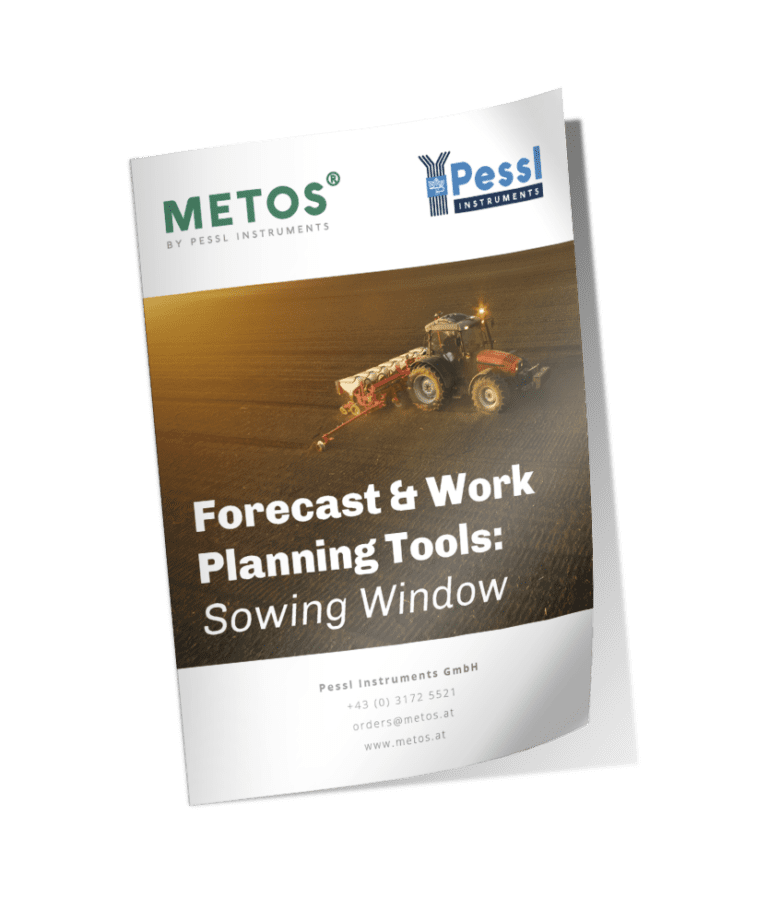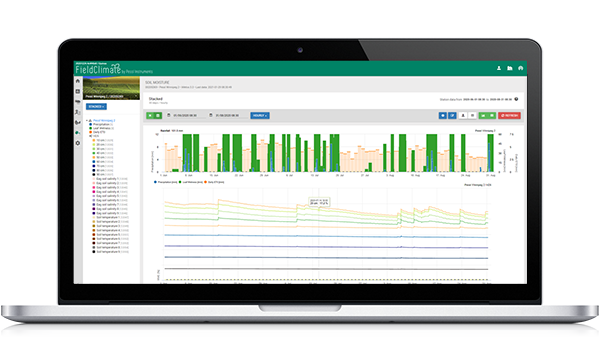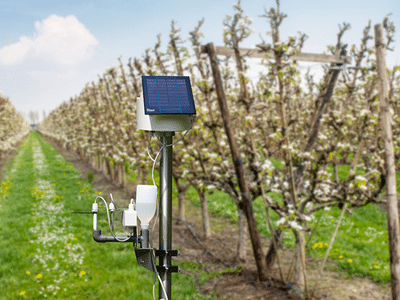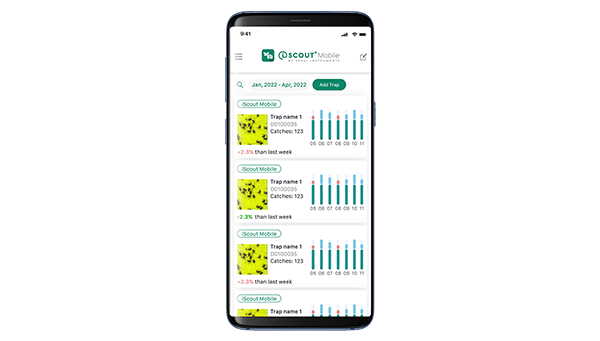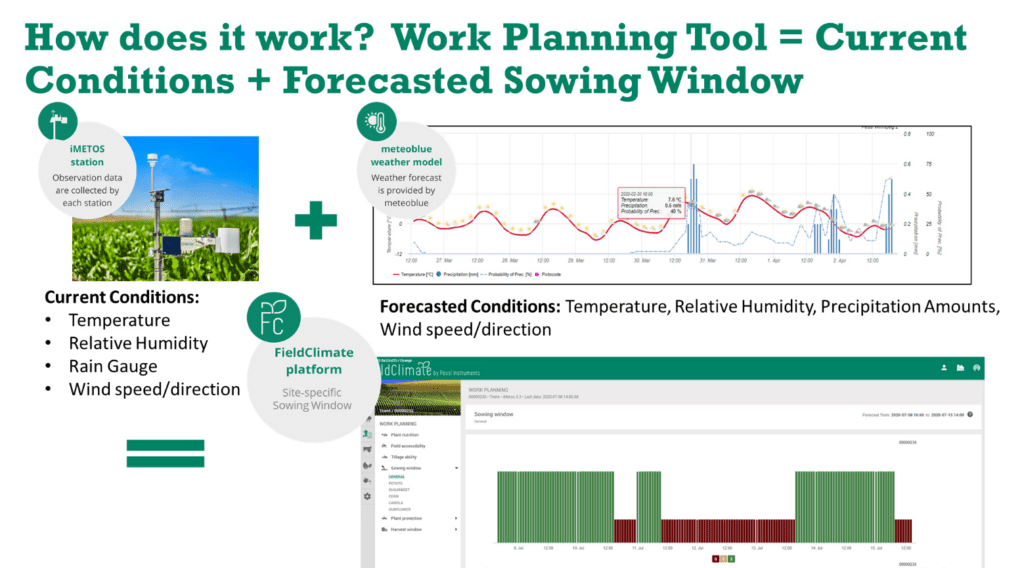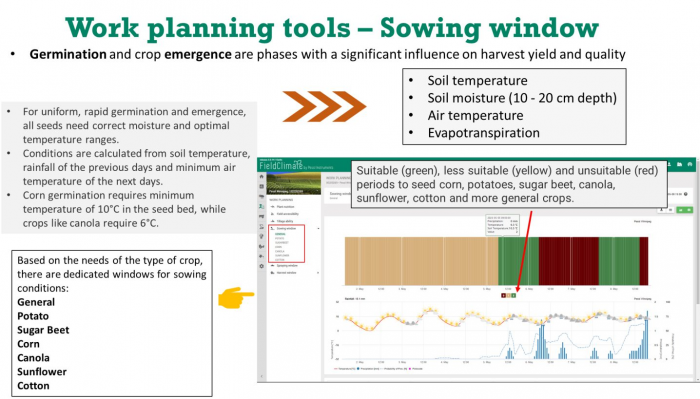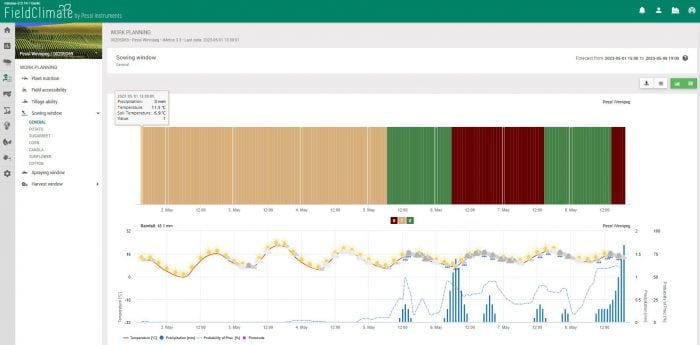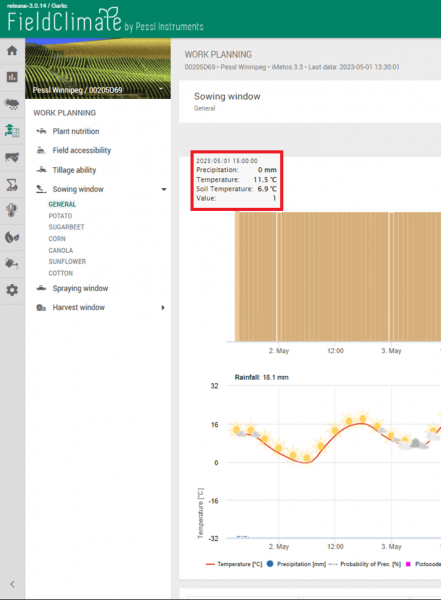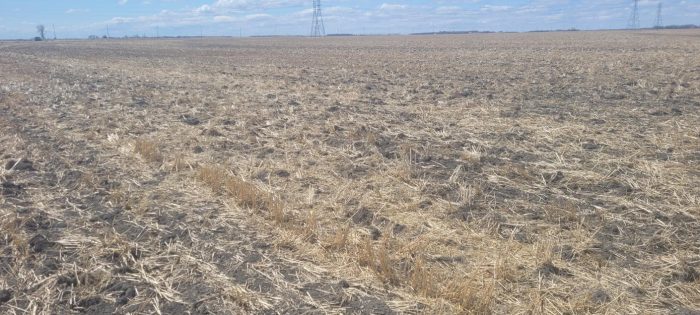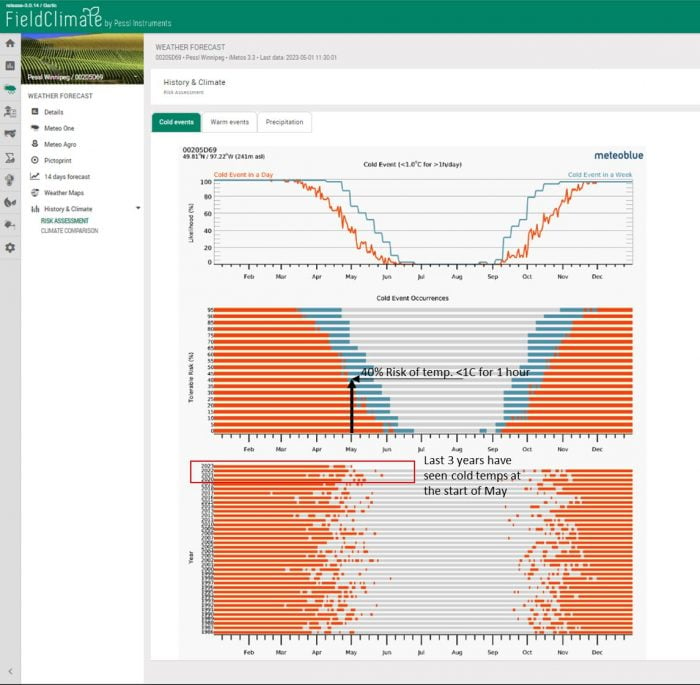When deciding to buy a weather station or IoT device for your farm/fields, always include the field-specific hourly weather forecast.
Forecast & Work Planning Tools:
SOWING WINDOW
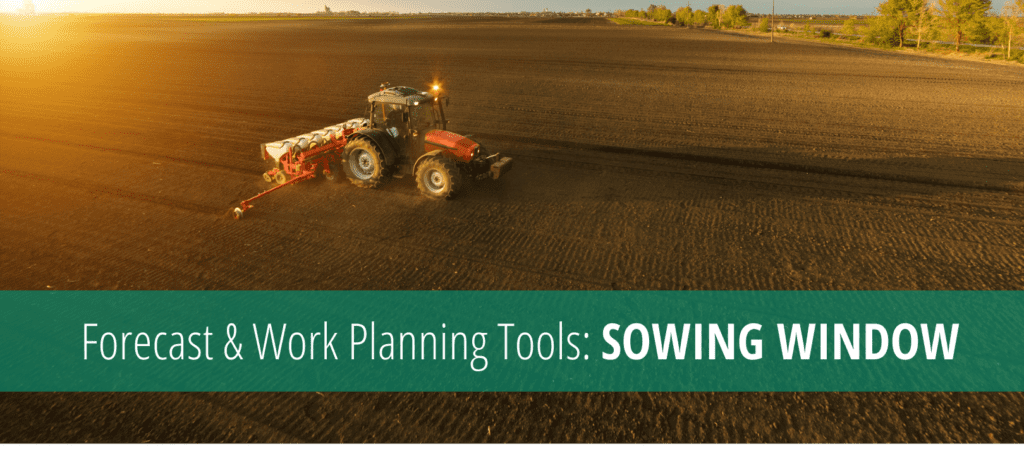

As we discussed in our second installment, the use of site-specific, hourly updated forecasts that are nudged and tuned with actual field level station data are integrated into a series of work planning tools: sowing windows, plant protection, harvest conditions, tillage ability, field accessibility, plant nutrition. Today we are looking at the sowing window tool for seeding operations.
How does it work?
In the image on the right, the field-specific weather station data is combined with the highly accurate field-specific forecast to produce a field-specific sowing window.
Work-planning tools – SOWING WINDOW
In the next image, the value proposition of the field-specific forecast and station is clearly illustrated since you now have the ability to know the sowing conditions before you go to the field via an advanced hourly window for conditions over the next 7 days and forecasted hourly output for important meteorological variables of precipitation, air temperature and soil temperature.
For Sowing Window to work you need
Case Study Example
In the image below is the sowing window for a field in Manitoba, Canada in early May 2023. It’s showing improving conditions as the week progresses with warming soils and warmer overnight temperatures. Some rainfall in the later half of the week does have the potential to impede sowing operations because of wet soil conditions.
So how does this compare to the actual temperatures and soil conditions in the field?
From the image below you can see the soil temperature at seed depth is 6.6°C at 1 pm, while the forecasted temperature at 3 pm is 6.9°C.
So as discussed, the site-specific weather station and forecast are providing a very accurate picture of sowing conditions.
If conditions hold in the forecast, this field should be seeded over the next week, depending on crop type and number of fields to be seeded.
Other tools that have been recently added to the Weather Forecast section of FieldClimate are the History & Climate tools. In this section you can use Risk Assessment tools for cold, warm and precipitation events or use the climate comparison tool.
In the image below we are highlighting the Risk of Cold event (<1°C for >1 hour). You can see from the second graph that there is still a 40% risk of temperatures dropping below 1°C for 1 hour at the start of May. The third graph shows a comparison of this year to the last 40 years.
The last 3 years have seen a cool start to the planting season, which can be partially blamed on the triple La Nina event. So, this is another tool that can be used as a planning tool for field operations.
So, when deciding to buy a weather station or IoT device for your farm/fields, always include the field-specific hourly weather forecast.
The station and forecast should be thought of as peanut butter and jelly, they go hand in hand for farm management decisions and in this case a work planning tools for sowing.
Want to learn more?
Read more detailed info on Sowing window in the brochure.
